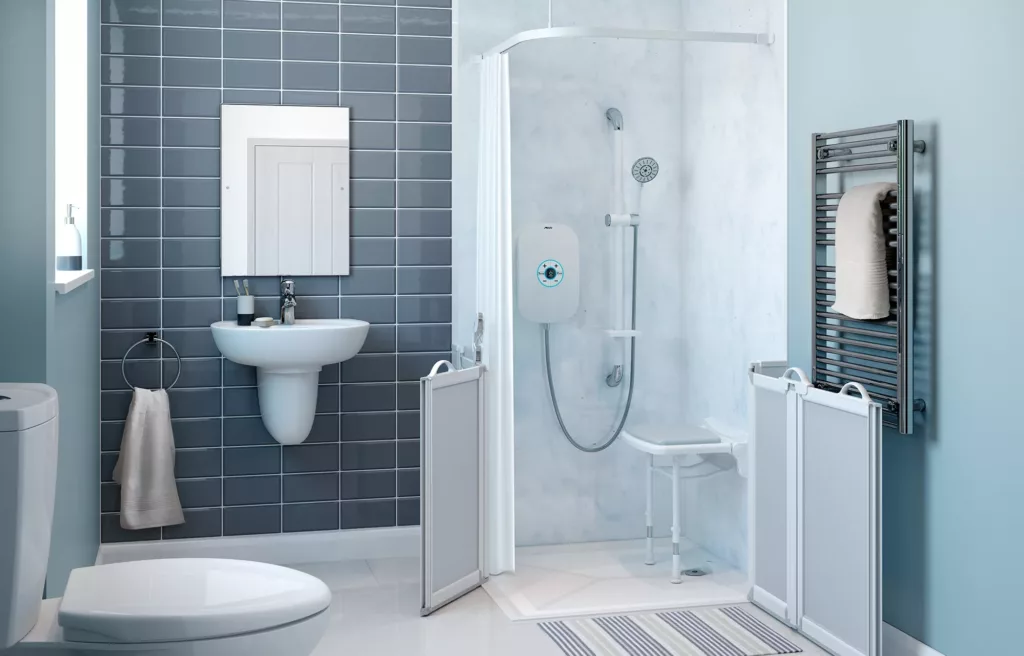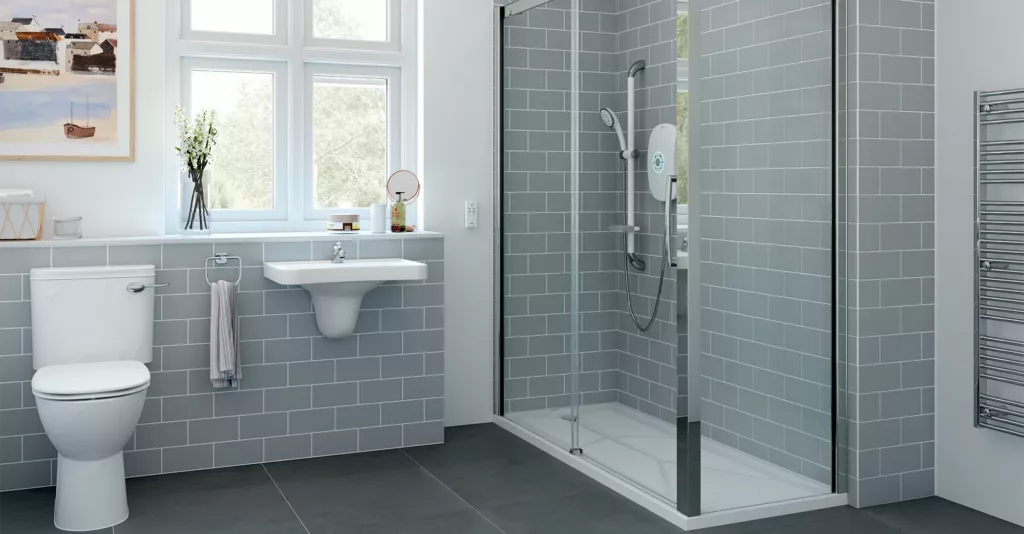Updated July 2025.
Choosing the best shower for wheelchair access can feel overwhelming. In this guide, you’ll learn:
✔️ The main types of wheelchair-accessible showers
✔️ UK space regulations and layout tips
✔️Pros, cons, and costs based on 2025 insights
✔️ How to pick the right solution for health, mobility, and future needs
✔️ FAQs to answer common questions
A refreshing shower is something everyone, regardless of age, disability, or mobility issues, should be able to enjoy safely and with dignity. However, with conventional showers, having an independent, safe, and enjoyable shower experience is often not easy. A common challenge particularly faced by wheelchair users is manoeuvring around a bathroom that has not been designed with a shower for wheelchair access.
What Makes a Shower Accessible for Wheelchair Users
An accessible shower must:
- Provide level-access entry (no threshold or a very low one) to eliminate trip hazards
- Be spacious enough—ideally 1200×1200 mm for easy wheelchair turning, according to UK building regulations
- Include safety features such as grab bars, non-slip flooring, and fold-down seating
These elements combine commitment to universal design—safe, inclusive spaces for all users.
Wheelchair Accessible Shower Options
Level Access Showers with Cubicles
Level access showers, are best for wheelchair roll-in needs. . These showers are completely flat—no threshold—allowing seamless entry. Enclosed by a three‑wall cubicle for privacy. They often include grab bars, floor slope, and room for a shower chair .
- Full cubicles. These come with three sides and a cubicle door and can be installed anywhere in the bathroom.
- Corner cubicles. These fit well in the corner of your bathroom and take up less space.
Walk-in Showers with a Shower Tray
Walk-in showers feature a minimal lip (tiny step) and are ideal for users who can walk a few steps. Benefits include cost efficiency, stylish appearance, and still barrier‑lite.
But even if a wheelchair user can currently step into the shower tray without difficulty, it’s critical to consider if this will also be manageable in the future.
Walk-in Baths with Overhead Showers
A shower over a walk-in bath with doors is perfect where space is tight or bathing is preferred. They combine a low-side door, overhead shower, and optional rising seat for wheelchair transfers.
The advantage of a walk-in bath with an overhead shower is it offers the flexibility of a shower for wheelchair access and a long, soothing bath.
Download or Request a Free Walk-In Bath Guide
Shower-Only Wet Rooms

A wet room is perhaps the ultimate choice of shower for wheelchair access.
When you choose to have a wet room, your entire bathroom has a level floor that is both waterproof and slip-resistant. As there is no cubicle (although portable ones can be used to provide privacy if preferred), shower-only wet rooms provide the maximum floor space to make it easier to manoeuvre in a wheelchair between the shower, sink, and toilet.
Choosing The Right Option
At Age Care Bathrooms, our experienced team of bathroom experts is here to discuss your needs and help you select a wheelchair-accessible shower. It’s also important to consider potential long-term changes in health and mobility, and we would recommend considering the following:
Dementia / progressive conditions: Opt for level-access showers or wet rooms for future-proofing.
Limited mobility: Walk-in trays balance independence and exercise.
Carer assistance needed: Cubicles offer privacy and dignity.
Full-time wheelchair use: Wet rooms give independence; if baths are valued, choose walk-in bath with rising seat.
Age Care Bathrooms is one of the UK’s leading providers of wheelchair-accessible showers and wet rooms. We’ve been building and installing mobility bathrooms for more than 30 years.
Give Our UK Team A Call Or Use Our Online Enquiry Form and We’ll Help You Find An Accessible Bathroom That’s A Perfect Fit For Your Circumstances.



